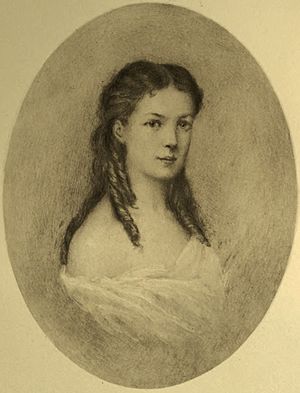Charles Murray (author and diplomat) facts for kids
Quick facts for kids
Sir Charles Augustus Murray
|
|
|---|---|
 |
|
| Envoy Extraordinary and Minister Plenipotentiary to the King of Portugal | |
| In office 1867–1874 |
|
| Preceded by | Edward Thornton |
| Succeeded by | Robert Bulwer-Lytton |
| Envoy Extraordinary and Minister Plenipotentiary to the King of Saxony | |
| In office 1859–1866 |
|
| Preceded by | Augustus Paget |
| Succeeded by | John Lumley |
| Envoy Extraordinary and Minister Plenipotentiary to the Shah of Persia | |
| In office 1854–1858 |
|
| Preceded by | Sir William Taylour Thomson (chargé d'affaires) |
| Succeeded by | Sir Henry Rawlinson |
| Minister Plenipotentiary to the Swiss Confederation | |
| In office 1853–1854 |
|
| Preceded by | Andrew Buchanan |
| Succeeded by | George John Robert Gordon |
| Master of the Household | |
| In office 1838–1844 |
|
| Preceded by | Sir Frederick Beilby Watson |
| Succeeded by | Henry Meynell |
| Personal details | |
| Born |
Charles Augustus Murray
2 November 1806 |
| Died | 3 June 1895 (aged 88) |
| Spouses |
Elizabeth Wadsworth
(m. 1850; died 1851)The Hon. Edith Susan Esther FitzPatrick
(m. 1862) |
| Relations | John Murray, 4th Earl of Dunmore (grandfather) Archibald Hamilton, 9th Duke of Hamilton (grandfather) |
| Children | Charles James Murray Cecil Henry Alexander Murray |
| Parents | George Murray, 5th Earl of Dunmore Lady Susan Hamilton |
| Education | Eton College |
| Alma mater | Oriel College, Oxford |
| Occupation | Author, diplomat |
Sir Charles Augustus Murray (born November 22, 1806 – died June 3, 1895) was a British author and a very important diplomat. He worked for the British government in many countries around the world.
Contents
Early Life and Adventures
Charles Augustus Murray was born into a noble family. His father was George Murray, 5th Earl of Dunmore. His mother was Lady Susan Hamilton. He had two brothers.
Charles went to famous schools like Eton College and Oriel College, Oxford. He finished his studies in 1827.
After college, Charles loved to travel. From 1835 to 1838, he explored parts of Europe and America. He even spent several months living with the Pawnee tribe in 1835. He wrote about his amazing experiences in a popular book called Travels in North America (published in 1839).
While in America, he met and fell in love with Elizabeth "Elise" Wadsworth. Her father, a wealthy landowner, did not approve of their relationship. Charles tried to stay in the United States by getting a job at the British Embassy, but it didn't work out. He returned to England and later wrote a novel inspired by his time there, called The Prairie-Bird (1844).
Working for the Queen
Charles Murray tried to become a Member of Parliament three times, but he was not successful.
However, he found a job working directly for the young Queen Victoria. From 1838 to 1844, he was the Master of the Household. This meant he helped manage the Queen's royal home and staff. He also served as an Extra Groom in Waiting, which was a special assistant to the Queen. He left this role when Queen Victoria's husband, Albert, Prince Consort, made changes to the royal household.
A Career in Diplomacy
After leaving the Queen's service, Charles Murray became a diplomat. This meant he represented Britain in other countries.
- Egypt (1846-1853): He served as the top British official, called a consul-general, in Egypt. He got along well with the local ruler, Mehmet Ali Pasha. While in Egypt, he did something very famous: he arranged for a hippopotamus named Obaysch to be sent to England in 1850. Obaysch was the first hippopotamus seen in England in thousands of years! Because of this, Charles Murray was nicknamed "Hippopotamus Murray." He also helped with building a railway in Egypt.
- Switzerland (1853-1854): For one year, he was the British Minister in Bern, Switzerland.
- Persia (1854-1859): Next, he became the British ambassador to the Shah of Persia (modern-day Iran). The Shah, Nasser al-Din Shah, and Murray did not like each other. There was a big disagreement involving a Persian army officer who started working for the British embassy. This led to a serious argument between the two countries. Britain was also worried about Persia trying to take over the city of Herat, which was seen as important for protecting India. Murray's actions contributed to the start of the Anglo-Persian War in 1856. After the war, he stayed as ambassador until 1859.
- Germany (1859-1866): He then became the British Envoy to the King of Saxony, a part of Germany.
- Portugal (1866-1874): His last diplomatic job was as the Envoy in Lisbon, Portugal.
When he returned to the United Kingdom in 1874, he was made a member of the Privy Council in 1875. This is a group of important advisors to the British monarch.
Family Life
Charles Murray finally married Elizabeth "Elise" Wadsworth on December 12, 1850, in Scotland. Sadly, Elise died on December 8, 1851, shortly after giving birth to their only child:
- Charles James Murray (1851–1929): He also became a politician and diplomat.
Charles Murray married a second time on November 1, 1862. His second wife was the Honourable Edith Susan Esther FitzPatrick. They had one son:
- Cecil Henry Alexander Murray (1866–1896): He sadly died at sea when he was 30 years old.
Sir Charles Augustus Murray passed away on June 3, 1895.
Images for kids





